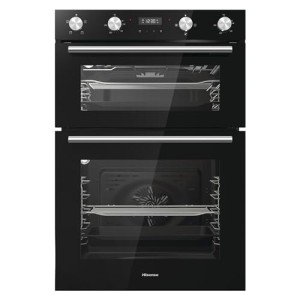The Comprehensive Guide to Built-In Ovens
Intro
Built-in ovens are a staple in modern kitchens, integrating elegance with performance. They offer a smooth aesthetic and effective cooking capabilities, making them a preferred choice for house owners and culinary enthusiasts alike. This short article delves into the benefits of built-in ovens, their various types, essential features to consider, setup tips, and upkeep advice, together with regularly asked questions.
Benefits of Built-In Ovens
Built-in ovens included an array of advantages that add to their popularity. Here are some key advantages:
- Space-Saving Design: Built-in ovens are developed to fit flawlessly into cabinets, enabling a more organized and space-efficient kitchen design.
- Visual Appeal: They provide a sleek and contemporary look that can enhance the total design of the kitchen.
- Improved Functionality: Built-in ovens often feature advanced functions and innovations that support numerous cooking approaches.
- Enhanced Cooking Experience: Many built-in designs include self-cleaning functions, temperature probes, and programmable settings, enhancing the cooking experience.
- Increased Property Value: A properly designed kitchen with built-in appliances can boost the worth of a home.
Types of Built-In Ovens
Built-in ovens come in a number of types, each created to fulfill various cooking choices and needs. Here are the main types:
| Type of Built-In Oven | Description |
|---|---|
| Single Oven | A single, standalone oven for traditional baking and roasting. |
| Double Oven | Integrates two ovens in one unit, permitting numerous dishes to cook at different temperatures. |
| Wall Oven | Installed in the wall, maximizing counter space, perfect for little kitchens. |
| Convection Oven | Uses fans to distribute hot air for even cooking, enhancing the results of baked goods. |
| Steam Oven | Makes use of steam for healthier cooking alternatives, protecting nutrients in food. |
Secret Features to Consider
When choosing a built-in oven, numerous features can impact performance and use. Here are some necessary functions to remember:
Cooking Modes
- Bake: Traditional baking with bottom heat.
- Broil: Top heat cooking suitable for browning and crisping.
- Convection: Circulates hot air for even cooking.
- Steam: Uses steam for much healthier cooking alternatives.
Size and Capacity
- Requirement sizes typically range from 24 to 30 inches wide.
- Consider the internal capacity-- it can range from 3 to 6 cubic feet, permitting various meal sizes.
Controls and Smart Features
- Touchscreen Controls: Easy programming and modifications.
- Smart Technology: Connectivity features permit remote monitoring and control via smartphone applications.
Energy Efficiency
- Try to find designs with ENERGY STAR scores, showing lower energy intake.
Safety Features
- Features like vehicle shut-off and kid locks enhance safety during operation.
Setup Tips
Setting up a built-in oven might require professional help, but here are some basic suggestions to remember:
- Choose the Right Location: Ensure there's sufficient space in your cabinetry for installation, remembering ventilation requirements.
- Electrical Requirements: Check that your kitchen's circuitry meets the oven's power requirements, particularly for electric designs.
- Level the Oven: Ensure the oven is level to promote even cooking.
- Protect the Oven: Attach it securely to the kitchen cabinetry to prevent motion during use.
Upkeep Advice
Routine maintenance is crucial for the longevity and efficiency of a built-in oven. Here's how to keep it in leading shape:
- Regular Cleaning: Wipe down surfaces after each use and perform deep cleaning periodically.
- Examine Seals: Inspect door seals for wear and ensure they preserve an airtight fit to enhance energy effectiveness.
- Adjust Temperature: If food consistently comes out overcooked or undercooked, think about recalibrating the oven's temperature settings.
- Expert Servicing: Schedule yearly check-ups with a trained technician to keep ideal performance.
Frequently asked questions
What is the difference between a built-in oven and a freestanding oven?
Built-in ovens are created to be set up within kitchen cabinetry, using a seamless appearance. In contrast, freestanding ovens are standalone units that generally come with their own cooktop.
Are built-in ovens more pricey than freestanding designs?
Normally, built-in ovens can be more pricey due to the added installation expenses and advanced features. However, rates differ widely based on brand, size, and functionalities.
Can I install a built-in oven myself?
While it is possible to set up a built-in oven yourself, it is suggested to hire an expert to guarantee correct installation, particularly if modifications to cabinets or electrical work are needed.
How often should I clean my built-in oven?
It is suggested to clean your built-in oven routinely after heavy use. For much deeper cleanings, use the self-cleaning function if offered or regularly carry out manual cleaning to avoid accumulation.
Built-in ovens are a valuable addition to any kitchen, using both aesthetic appeal and advanced cooking abilities. By understanding visite site , features, installation, and upkeep requirements, property owners can make informed options that enhance their cooking experience and improve the general worth of their homes. As kitchen styles continue to develop, built-in ovens will likely stay a prominent option for contemporary homes.

